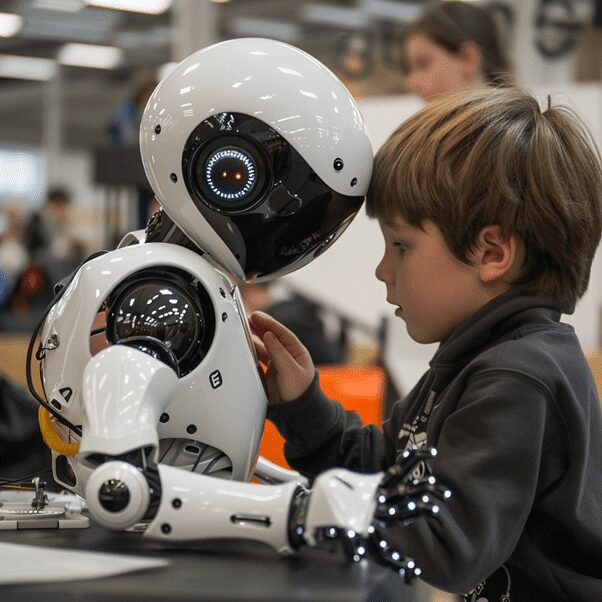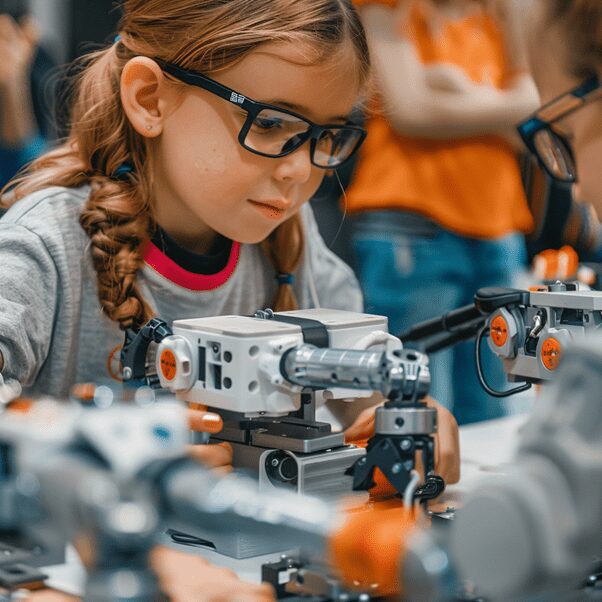Robotics in education revolutionizes learning by making it more engaging, interactive, and accessible, while teaching kids essential skills like coding, AI, and problem-solving. It prepares students for future careers and transforms traditional education methods.

Table of Contents
Introduction
The world of education has undergone a major transformation in recent years, and the use of technology has played a major role in this transformation. One technology that is increasingly being used in classrooms around the world is robotics. Robotics in education is an exciting new way to teach children coding, artificial intelligence, and other STEM-related subjects. In this article, we will explore the benefits of robotics in education, how it can be used to teach kids coding and AI, and the various ways in which robotics is changing the face of education.
Benefits of Robotics in Education
There are numerous benefits of using robotics in education.
Firstly, it makes learning fun and engaging. Robots are interactive and can provide immediate feedback to students, which makes the learning process more enjoyable and rewarding.
Additionally, robotics helps to develop critical thinking and problem-solving skills, which are essential for success in today’s rapidly changing world.
Moreover, robotics in education promotes creativity and innovation. Students can use their imagination to design and build their own robots, and in the process, they learn about engineering, design, and construction.
Robotics also helps to promote teamwork and collaboration, as students often work together to build and program their robots.
Teaching Kids Coding with Robotics
Coding is a fundamental skill in today’s digital world, and it is essential for many future careers. Robotics provides an excellent platform for teaching kids coding, as it combines the physical and digital worlds. Children can learn to code by programming their robots to perform different tasks and activities.
One of the most popular programming languages used in robotics is Scratch, which is designed specifically for children.
Scratch uses a graphical interface that allows kids to drag and drop code blocks, making it easy to learn and understand. With Scratch, children can program their robots to move, make sounds, and even respond to different stimuli.
Another popular programming language used in robotics is Python, which is a more advanced language but is still easy enough for children to learn. Python is used to program more complex robots that can perform a wide range of tasks, such as navigating mazes and playing games.

Teaching Kids AI with Robotics
Artificial intelligence (AI) is another important skill for children to learn, as it is becoming increasingly prevalent in today’s society. Robotics provides an excellent platform for teaching kids about AI, as robots can be programmed to learn and adapt to different situations.
One way to teach kids about AI is through machine learning, which is a subset of AI.
Machine learning involves training robots to recognize patterns and make decisions based on those patterns. For example, a robot can be trained to recognize different objects and sort them into different categories.
Another way to teach kids about AI is through neural networks, which are a type of machine learning algorithm.
Neural networks are modeled after the human brain and can be used to teach robots how to recognize patterns and make decisions.
Neural networks can be used to teach robots to recognize speech, faces, and even emotions.
Changing the Face of Education
Robotics is changing the face of education in many ways.
Firstly, it is making learning more interactive and engaging. Students are no longer passive recipients of information, but active participants in the learning process.
Robotics is also making education more accessible to children with disabilities, as robots can be programmed to assist with mobility and communication.
Additionally, robotics is helping to prepare children for the future job market. Many of the skills taught through robotics, such as coding, AI, and problem-solving, are in high demand in today’s job market.
By teaching children these skills, they are better prepared for the challenges and opportunities of the future.
Conclusion
Robotics in education is a powerful tool for teaching kids about coding, AI, and other STEM-related subjects. It makes learning fun, engaging, and interactive, and it helps to develop critical thinking, problem-solving, and teamwork skills. Robotics is changing the face of education by making it more accessible, preparing children for the future job market, and bridging the gender gap in STEM education. As we move into the future, robotics will continue to play an important role in education and help prepare the next generation for the challenges and opportunities ahead.





